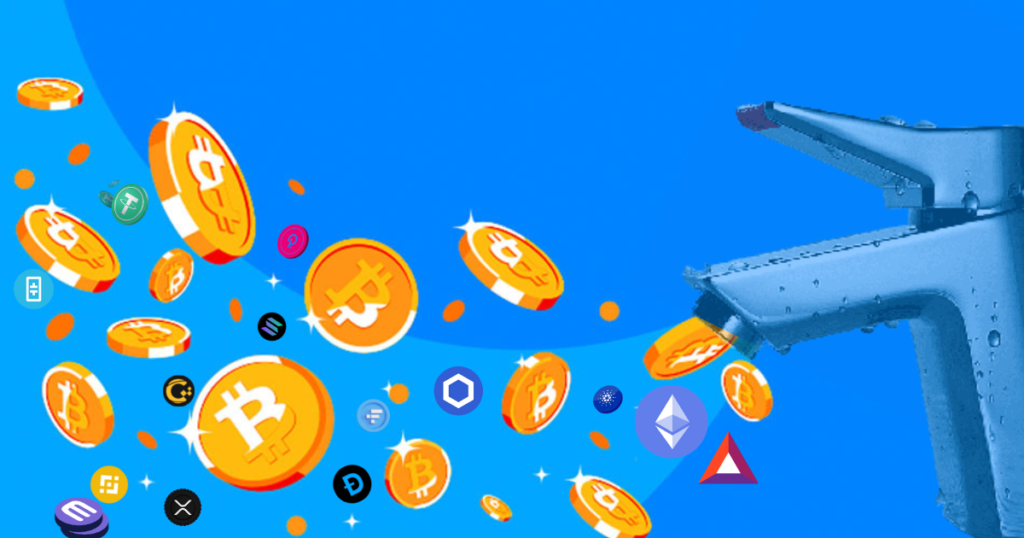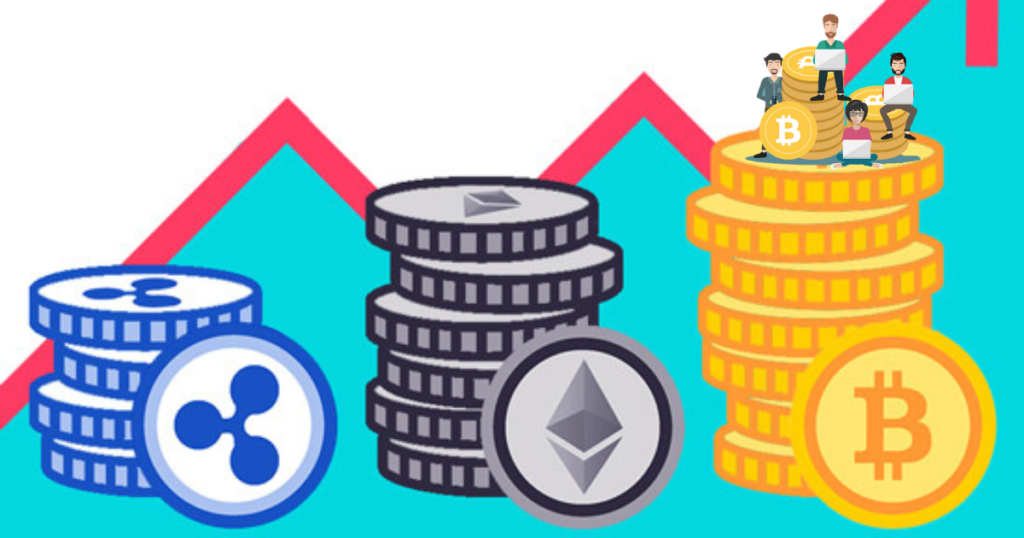Tokenomics refers to the economics of a token, it’s a term that describes how a token’s value and use can be affected by various factors such as its creation, distribution, Supply, demand, motivational systems, and token burn cycles.
Tokenomics is essential for crypto projects. Investors and stakeholders must assess the Tokenomics of a project before they decide to invest. Tokenomics a combination of the words token and economics is an essential component of conducting fundamental research on crypto projects. Tokenomics is crucial for assessing the future prospects of a blockchain-based project. This includes looking at the whitepaper, founder team, roadmap, and community growth to ensure long-term sustainability crypto projects must carefully plan their Tokenomics.
In this article, we’ll discuss what Tokenomics are, why it matters, and what the future holds in Tokenomics and I’ll of course share my thoughts on it.
Tokenomics At a Glance
To encourage or discourage different user actions blockchain projects create Tokenomic rules that are tied to their tokens. This works in the same way as a central bank does. Printing money and implementing monetary policies to encourage spending lending and saving. Learn the difference between them here.
Tokenomics is implemented via code which makes them transparent, predictable, and easy to modify, unlike fiat currency. Let’s take bitcoin as an example pre-programmed the total bitcoin supply is 21 million coins. The process of mining is how bitcoins are produced. When a block of bitcoin is mined every 10 minutes or more the miners receive some bitcoin, and the block subsidy was halved from 50 bitcoin to 25 bitcoin and 12.5 bitcoin respectively on January 3rd, 2009. This is the date when the first block or genesis was created on the bitcoin network. These rules allow us to calculate that approximately 328,500 bitcoins were expected to be mined by 2022.
We divide the total number of hours by 10 which is because a block can only be mined once every 10 minutes and multiply this by 6.25 which is because each block yields 6.25 bitcoin in rewards. It’s possible to predict the number of bitcoins that will be mined each year using this math we can predict that the last bitcoin will be mined in the year 2140.
Bitcoin’s Tokenomics include the creation of transaction fees. These fees are paid by miners when a block is validated. The fee will increase with increased transaction volume and network congestion. It prevents spam transactions and encourages miners to validate transactions even though block subsidies are decreasing. The Tokenomics of bitcoin is simple and clever everything is clear and predictable. Participants are compensated for their contribution to bitcoin’s value and the strength of the network.
Key Elements for Tokenomics
Tokenomics is a general term that refers to a variety of factors that influence the value of a cryptocurrency. It refers first and foremost to the structure of a cryptocurrency’s economy as it was designed by its creators. The following are the top factors to take into consideration when examining cryptocurrency Tokenomics.

Token supply
The primary factors that affect the price of any product or service are supply and demand the same applies to crypto. There are many critical metrics that measure a token supply, maximum supply is the first. This refers to the maximum number of tokens that can be coded in a cryptocurrency’s lifetime. In the case of bitcoin, the max supply is 21 million coins. BNB’s maximum supply is 200 million, and Litecoin has a heart limit of 84 million coins.
Some tokens have no maximum supply. Every year the Ethereum network supply increases in ether. There is no limit to the supply of stablecoins such as USDT, USD coin, and Binance USD because these coins are issued on the basis of the reserves backing them. The theory is that they can grow without limit. Two more cryptos have an uncapped supply of polka dot and dogecoin.
Circulating Supply
The second factor refers to the circulating supply, this is the total number of tokens that are in circulation. Tokens can be either burned or minted this can also have an impact on the price of the token the token supply can give you an idea of the number of tokens that will eventually be available.
Token Utility
The token utility is the ability to use a token in a specific way. BNB’s utility is the ability to power the BnB chain and enjoy trading fee discounts and transaction fees on the BnB chain. It also serves as a community utility token on the BnB chain. To earn additional income users can stake BnB with different products in the ecosystem. Tokens can also be used in other ways tokens with governance rights enable the holder of a token to vote on any changes to its protocol. Stablecoins can be used to create a currency, security tokens on the other hand are financial assets. A company could for example issue tokenized shares in an initial coin offering or ICO which would grant the holder ownership rights as well as dividends, these factors will help you determine the possible use cases for tokens. This is crucial in understanding how token economies might evolve.
Analyzing Token Distribution
It’s important to consider how tokens are distributed in addition to supply and demand. Individual investors and large institutions behave differently. It’s possible to determine which entities own a token and how they will trade it, this will impact the token’s price.
There are two ways tokens can be launched and distributed a fair launch or a pre-mining launch.
Fair Launches
Fair launches are those in which tokens are not available to the public before they are minted this category includes dogecoin and bitcoin.
Pre-mining Launch
Pre-mining allows for a portion to be minted before it’s made available to the public this type of distribution can be seen in Ethereum and BnB. You should pay attention to the distribution of tokens.
Riskier organizations with large stakes and tokens are those that have a few large partners and founding teams are more likely to hold a token than other investors, which means that stakeholders have a better alignment of interests for long-term success, also you should look at the release and lock-up dates of tokens to determine if there will be a lot of tokens in circulation. This can put downward pressure on their value.
Token Burning
Many cryptocurrency projects frequently burn tokens, which means that tokens are taken out of circulation permanently. BNB for example uses coin burning to eliminate coins from circulation and decrease its total supply. BNB has 165 million 116,000.760 pre-mined coins which means that BnB’s total supply of coins is 200 million BnB at the time of writing. BNB will continue to burn more coins until half of its total supply is exhausted, this will reduce b b’s total supply to 100 million BnB. Similar to BnB, Ethereum began to burn eath in 2021 in order to reduce its total supply. It’s deflationary when the supply of tokens is decreased, inflation is the opposite.

Incentive Mechanisms
It’s vital to understand the incentive mechanisms of a token. Tokenomics is all about how a token encourages participants to make a long-term sustainable investment. An example of an elegant model is bitcoin’s block subsidy system and transaction fees, another validation method is the proof of stake. Participants can lock their tokens to verify transactions. The more tokens that are secured the greater the chance of being chosen to validate transactions and receive rewards, this means that validators who attempt to harm the network’s integrity will have their assets put at risk if they do. These features encourage participants to be honest and maintain the integrity of the protocol.
To achieve rapid growth many Defi projects have employed innovative incentive mechanisms. The compound is a cryptocurrency lending and borrowing platform that allows investors to deposit cryptos into the compound protocol and earn interest, in addition, they can also receive comp tokens. Comp tokens also serve as governance tokens for the compound protocol. These design choices align the interests and long-term prospects of the company with those of all participants.
What’s Next in Tokenomics?
Tokenomics have changed significantly since 2009 when the bitcoin network’s genesis block was created. Many different models of Tokenomics have been explored by developers, there have been both successes and failures. The Tokenomics model that bitcoin uses to make money is still enduring. It stood the test of time, other Tokenomics designs that are not as good have failed. Non-fungible tokens or NFTs are a new Tokenomics model that is based on digital scarcity. Future innovations in Tokenomics could be possible through the tokenization of traditional assets like artworks and real estate.
Conclusion
My Thoughts: Tokenomics is an essential concept to know if you’re interested in crypto, it’s a term that describes the main factors that affect the token’s value. It’s important to remember that not one factor can be considered a magic key. It’s essential to consider all factors and analyze the whole. Tokenomics can be used in conjunction with other fundamental analysis tools to help you make an informed decision about a project’s future prospects as well as its token’s value.
Related: How does cryptocurrency works? Explained
The economics of a token can have a significant impact on how it’s used, how easy it is to build a network, and whether there will still be interest in its use case in the future. I hope you got value from this article and have a better understanding of what Tokenomics is what’s involved in Tokenomics and how to evaluate a token. Do you think we’ll have more information on Tokenomics in the future leave a comment below.

